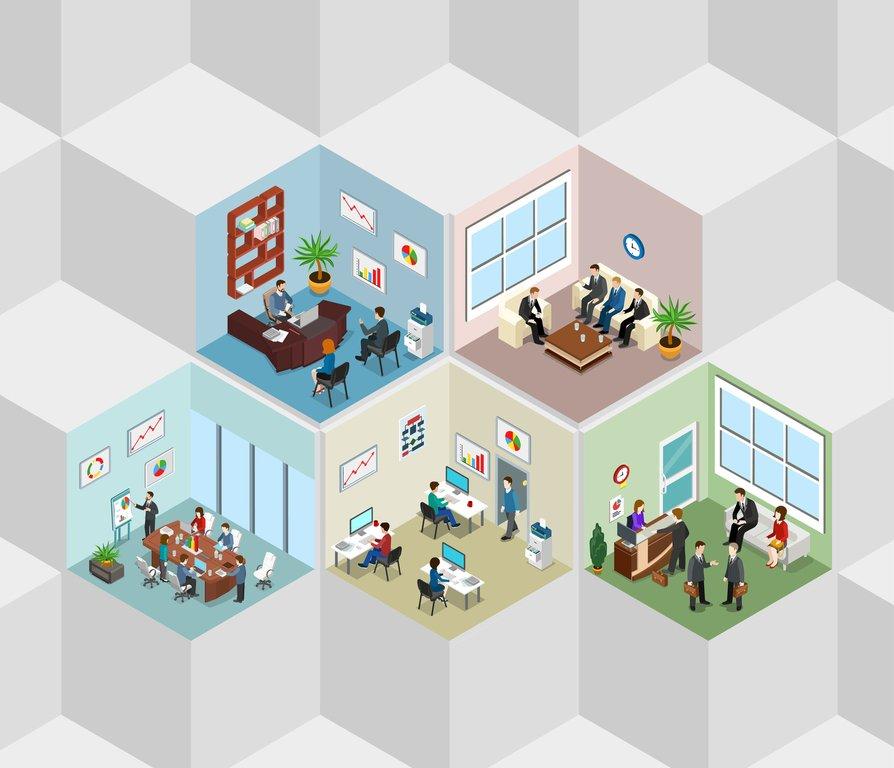Breaking Down Silos: How ERPNext Enables Cross-Department Collaboration
Silos hurt performance, ERPNext helps you fix them. Learn how integrated ERP drives collaboration and growth across your organization.

If your departments aren’t talking to each other, your business is leaking time, money, and opportunity.
In many organizations, HR is managing employee records in spreadsheets, Finance is tracking budgets in a separate accounting tool, and Inventory is working off outdated stock lists. The result? Misaligned priorities, slow approvals, duplicated work, and decisions based on guesswork.
In an era where speed and agility define competitive advantage, running your business in silos is no longer sustainable.
That’s where ERPNext comes in; not just as an ERP, but as a collaboration engine that breaks down walls between departments and replaces them with real-time visibility, automated workflows, and shared data.
What are Silos and why does it matter?
Silos occur when departments operate in isolation, using separate systems and workflows that limit communication, data sharing, and collaboration. Silos aren’t just a buzzword; they’re a well-recognized barrier to performance across industries. A Salesforce study found that 70% of customer experience leaders and executives cite silo mentality as the biggest obstacle to delivering quality customer service. Meanwhile, a Harvard Business Review Analytics Services survey revealed that 67% of collaboration failures are directly linked to departmental silos.
And this isn’t a new issue. As far back as 2002, the American Management Association reported that 83% of executives acknowledged silos in their organizations, with a staggering 97% stating that these silos negatively impacted their business.
The takeaway? The silo effect is persistent, measurable, and deeply detrimental, making it a priority for any organization serious about improving collaboration and operational efficiency.
Why Departmental Silos Hurt Business
Silos form when departments use disconnected tools, maintain separate databases, or follow isolated workflows. This leads to:
- Redundant data entry (HR updates employee data, Finance asks again for payroll)
- Inaccurate reporting due to inconsistent data
- Slow decision-making because teams wait on others to provide information
- Limited accountability due to unclear process ownership
The result? Frustrated employees, wasted resources, and a slower path to growth.
| Ready to transform your business with ERPNext? Discover the key to choosing the perfect partner for a seamless journey here. |
ERPNext: The Bridge Between Departments
ERPNext solves this challenge by offering a unified platform where all key functions operate under one digital roof. From recruitment and payroll to purchase orders and inventory levels, everything is interconnected.
Let’s break this down with examples from three core departments:
HR & Payroll: Streamlining Employee Lifecycle
- Centralized Employee Records: Once HR creates an employee profile, Finance automatically has access for payroll, and Admin can initiate asset allocation.
- Automated Payroll Integration: Leaves, attendance, and tax declarations are synced in real-time; no more last-minute spreadsheet sharing.
- Performance & Appraisal Linkages: HR and department heads collaborate directly within ERPNext to evaluate performance, set KPIs, and plan promotions.
Finance: Real-Time Control & Clarity
- Integrated Accounting: Sales invoices, expense claims, and purchase orders flow directly into the general ledger, no manual data entry needed.
- Budget vs Actual Tracking: Departmental budgets are mapped in ERPNext, allowing Finance to track project-level expenses in real time.
- Multi-Currency & Global Compliance: For companies operating across borders, ERPNext handles multi-currency transactions and tax compliance across jurisdictions.
Insight: Finance teams often become more strategic when freed from operational firefighting. ERPNext gives them that freedom.
| Interested in learning how we tailored ERPNext for UAE-specific localization? Discover the details here. |
Inventory & Procurement: Smarter Stock and Supplier Coordination
- Stock Visibility for All: Sales, Production, and Procurement teams can view live inventory levels, minimizing overstocking or stockouts.
- Purchase Planning Linked to Sales Forecasts: With data connected, procurement knows when and what to order based on actual demand, not assumptions.
- Approval Workflows: Finance approves purchase orders generated by Operations with full visibility into budgets and supplier terms.
Cross-Department Collaboration = Business Agility
When departments are aligned through a unified ERP like ERPNext:
- Teams communicate through structured workflows, not email chains.
- Managers access the same data, reducing misinterpretation.
- Decision-making is faster, based on a single source of truth.
In other words, your business becomes more agile, data-driven, and resilient.
Final Thoughts
ERPNext isn’t just about software; it’s about enabling collaboration, increasing transparency, and empowering teams to work together seamlessly. Whether you’re a 10-person startup or a 500-person enterprise, breaking down silos with ERPNext can transform your operations.
Why QCS?
At QCS (Quark Cyber Systems), we understand that breaking down silos isn’t just about implementing software; it’s about transforming the way teams work together. With over 10 years of experience in ERP consulting and digital transformation in the UAE region and as a proud Frappe Gold Partner, we’ve helped organizations across industries unlock the full potential of ERPNext. Whether you're looking to streamline collaboration, automate workflows, or scale your business with confidence, QCS is your trusted partner on the journey.
| Need help integrating your departments on ERPNext? Let’s talk. At Quark Cyber Systems, we specialize in tailored ERPNext deployments that align with your unique business processes and collaboration goals. |
Deepa Ramachandran
Juggling tech trends, art projects, and a love for storytelling—let’s explore it all together!

No comments yet. Login to start a new discussion Start a new discussion